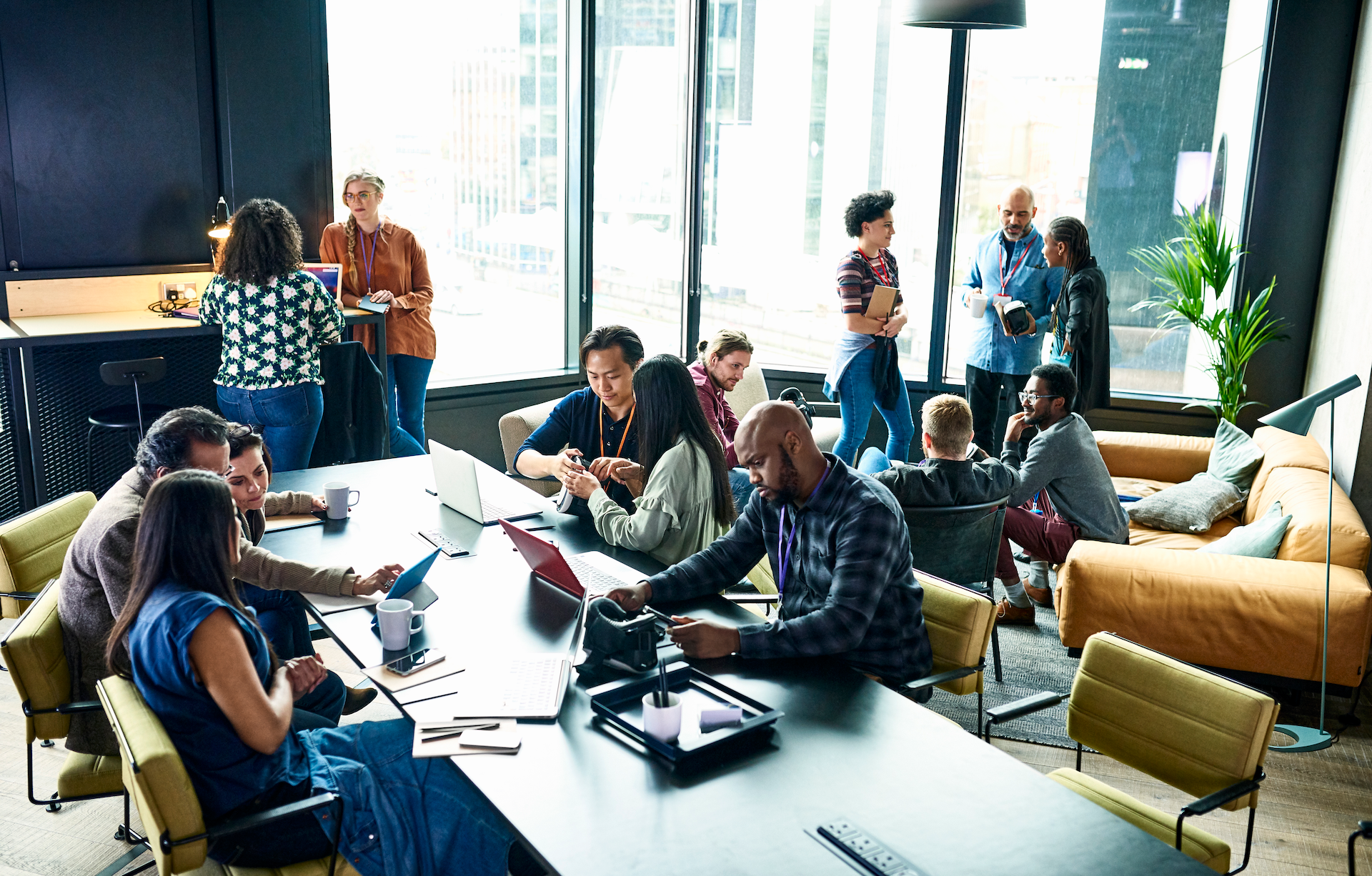
[ad_1]

If you want a new job, don’t just rely on friends or family. According to one of the most influential theories in social science, you’re more likely to nab a new position through your “weak ties,” loose acquaintances with whom you have few mutual connections. Sociologist Mark Granovetter first laid out this idea in a 1973 paper that has garnered more than 65,000 citations. But the theory, dubbed “the strength of weak ties,” after the title of Granovetter’s study, lacked causal evidence for decades. Now a sweeping study that looked at more than 20 million people on the professional social networking site LinkedIn over a five-year period finally shows that forging weak ties does indeed help people get new jobs. And it reveals which types of connections are most important for job hunters.
The strength of weak ties “is really a cornerstone of social science,” says Dashun Wang, a professor at the Kellogg School of Management at Northwestern University, who was not involved in the new study. For the original 1973 research, Granovetter interviewed people late in their career and asked them about their experiences with job changes. Before his groundbreaking paper, many had assumed that new positions came from sources such as close personal friends who would put in a good word, headhunters who would seek out strong candidates or public advertisements. But Granovetter’s analysis showed that people actually got new jobs most frequently through friends of friends—often someone the job seeker had not known before they started looking for a new position. “That really shook people up because assumptions about how people find the best jobs in life doesn’t look to be true—it looks like actually strangers might be the best contacts for you,” says Brian Uzzi, also a professor at the Kellogg School of Management, who was not involved in the new study.
What gives strangers an edge over friends? Granovetter posited that close connections—people in the same circle—largely have the same facts and professional options at their disposal. But people who belong to different communities can offer a whole new set of information and helpful connections. A mutual friend can act as a bridge, connecting the job hunter to a contact in a different group, which provides new opportunities.
This explanation was based on observational data showing a correlation between weak ties and job mobility. But correlation is not causation, and in the nearly 50 years since Granovetter first set down his idea, researchers had not proved that an applicant’s weak ties are the specific thing that causes them to nab that new job. Two decades ago, when he was a graduate student, Sinan Aral could not help noticing that gap. “There’s a 500-pound gorilla in the middle of the room of this literature, which is that we don’t have any causal evidence for any of these theories,” says Aral, senior author of the new study, who is now a professor of management at the Massachusetts Institute of Technology. “We don’t know whether weak ties are correlated with goodness [such as new jobs] because weak ties themselves are good or because people who make weak ties have some unobserved characteristics that also make them more productive, have good ideas and get better jobs, promotions and wages.” As Wang puts it, “People use this theory and associated concepts to explain a wide range of phenomena, but there has not been a causal test for whether weak ties are causally linked to job opportunities. And that’s what this paper does.” The study was published in Science on Thursday.
Developing experimental proof of this theory is extremely challenging. To test causality with the rigor of a randomized clinical trial, researchers would have to take two equivalent groups of people, experimentally manipulate their social networks by giving one group more weak ties and the other fewer and then observe whether the groups experienced different outcomes. But Aral and his colleagues discovered that LinkedIn had already done something almost as good. As engineers for the professional networking site tweaked the algorithm for recommending “People You May Know,” they ended up conducting many natural social experiments. In one case, LinkedIn would randomly vary the number of weak-tie, strong-tie and total recommendations that it displayed for users, where the strength of a tie depends on the proportion of mutual to nonmutual connections. This provided a perfect experiment to test Granovetter’s idea. The researchers, led by LinkedIn applied research scientist Karthik Rajkumar and M.I.T. graduate student Guillaume Saint-Jacques, analyzed five years of these data, comparing LinkedIn users who were algorithmically assigned more weak-tie recommendations (and therefore formed more weak ties) with those who were assigned more strong-tie suggestions. Next, they estimated how adding a strong or weak tie affected subjects’ subsequent job mobility. Thanks to LinkedIn’s algorithmic experiments, the team could distinguish the influence of tie strength from that of the total number of new ties.
The results not only supported Granovetter’s theory but also added several refinements. First, not all the weak ties were equally helpful. If the strength of a tie depended on the number of mutual contacts, then moderately weak ties where two people shared roughly 10 acquaintances mattered the most. But ties’ strength can also be measured by interaction intensity, or the frequency with which you contact your weak-tie acquaintance. When the researchers examined this metric, they found that the most useful ties were the ones that people did not interact with very often. Finally, the team found that these effects varied by industry: weak ties on LinkedIn were particularly beneficial in digital industries, which tend to involve machine learning, artificial intelligence, robotization, software use, and remote and hybrid work, compared with “analog” industries that require in-person presence.
These results could benefit job seekers pondering how to build and evolve their social networks. For instance, when it comes to LinkedIn’s suggestions of people to connect with, “you may not want to ignore those,” Aral says. “And if you get a recommendation for somebody, and you don’t see what the connection could possibly be,” they still might be worth exploring. “Those are the … weak ties that might actually be the source of your next job,” he adds.
Despite these results, it’s important not to neglect strong ties, Wang says. This study focused on successes—that is, people who got new jobs. But it did not examine all of the failures and rejections that happened before the success. To persist in a grueling job search, we need strong ties to provide social support. “Only observing successes is going to tell us only part of the story,” Wang notes. “In order to really be successful in the end, you really need your strong ties.” These strong ties are vital for groups such as immigrants, who often form tight-knit communities to deal with the discrimination and other pressures they experience. But this also means that they may have a harder time accessing weak-tie opportunities. “Some of the things that hold immigrant groups or disadvantaged groups back is the very fact that it’s harder for them to have these weak ties,” Uzzi says.
Along with job seekers, policy makers could also learn from the new paper. “One thing the study highlights is the degree to which algorithms are guiding fundamental, baseline, important outcomes, like employment and unemployment,” Aral says. The role that LinkedIn’s People You May Know function plays in gaining a new job demonstrates “the tremendous leverage that algorithms have on employment and probably other factors of the economy as well.” It also suggests that such algorithms could create bellwethers for economic changes: in the same way that the Federal Reserve looks at the Consumer Price Index to decide whether to hike interest rates, Aral suggests, networks such as LinkedIn might provide new data sources to help policy makers parse what is happening in the economy. “I think these digital platforms are going to be an important source of that,” he says.
[ad_2]